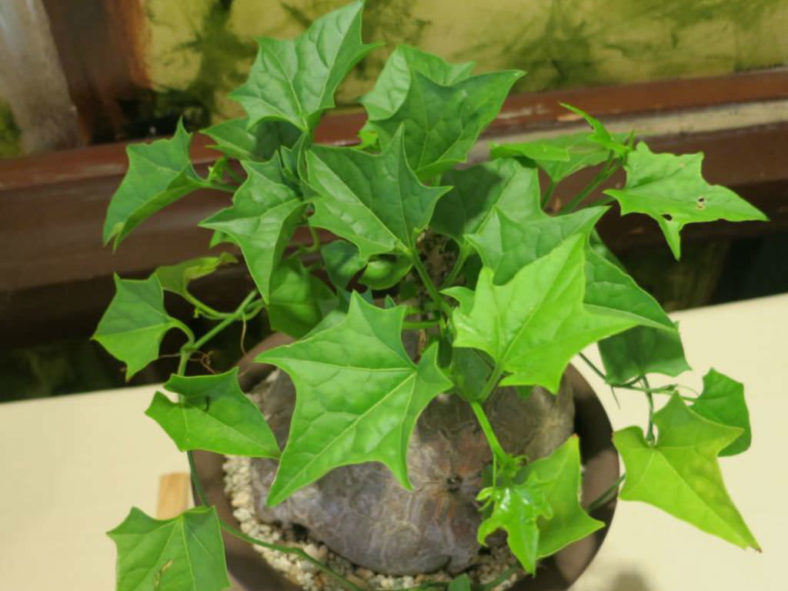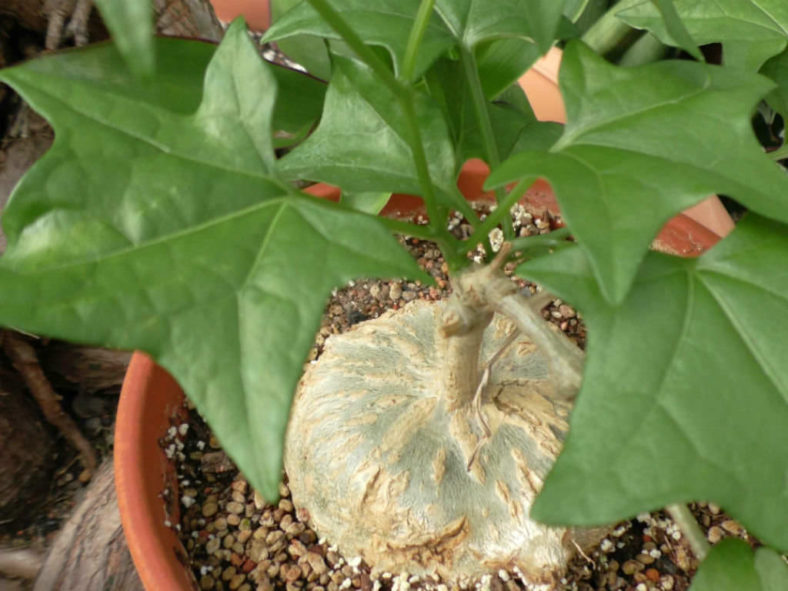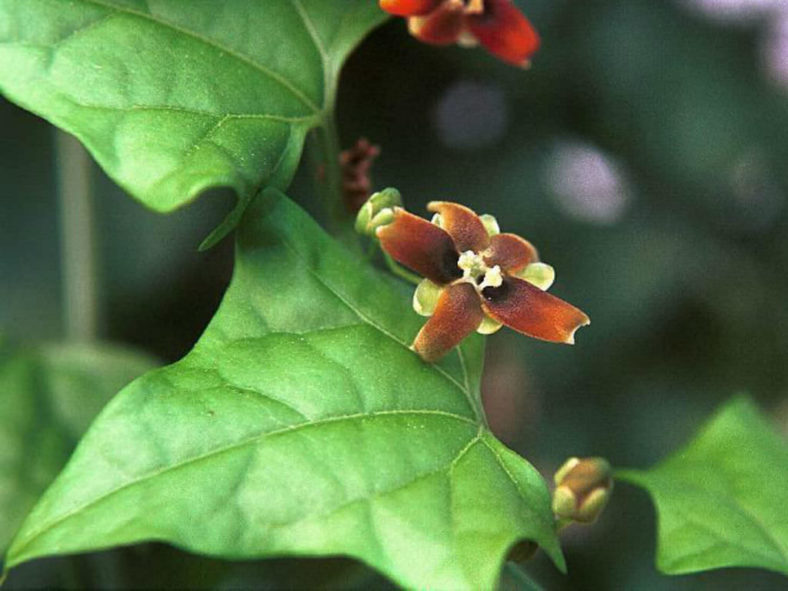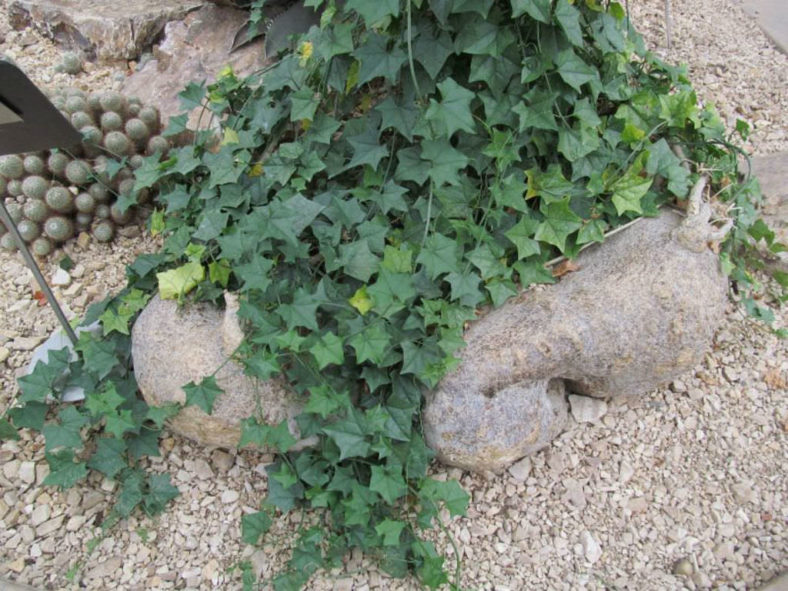Scientific Name
Gerrardanthus macrorhizus Harv. ex Benth. & Hook.f.
Common Name(s)
Bigfoot
Synonym(s)
Gerrardanthus portentosus
Scientific Classification
Family: Cucurbitaceae
Tribe: Zanonieae
Genus: Gerrardanthus
Etymology
The specific epithet "macrorhizus" (pronounced "mak-roh-RY-zus") means "large-rooted, having large root" and refers to the large, tuberous rootstock of this species.
Origin
Gerrardanthus macrorhizus is native to South Africa (Eastern Cape and KwaZulu-Natal) and Eswatini. It occurs in lowland forests.
Description
Gerrardanthus macrorhizus is a perennial climber with woody, high-climbing stems that arise from a flattened tuberous rootstock. The caudex can reach a diameter of 5 feet (1.5 m), while the stem can grow up to 65.6 feet (20 m) long. The leaves are somewhat succulent, broadly ovate or heart-shaped in outline, unlobed or palmately 3- to 7-lobed, and can measure up to 3.2 inches (8 cm) in length and nearly equal in width. They are smooth, shiny, dark green, and prominently veined.
During the summer, Gerrardanthus macrorhizus produces brownish flowers that can reach a diameter of 0.5 inches (1.5 cm). This plant is dioecious, meaning it has male and female flowers on separate plants. The male flowers appear 2 to 7 in corymbiform axillary fascicles, while the female flowers appear solitary. If a female flower is pollinated, it is followed by a flask-shaped capsule that dries brownish-yellow and dehisces at the top.

How to Grow and Care for Gerrardanthus macrorhizus
Hardiness: USDA hardiness zones 9b to 11b: from 25°F (-3.9°C) to 50°F (10°C).
Young plants make interesting subjects for hanging baskets. They are relatively easy to grow and rapidly develop a nice caudex, provided they receive abundant water and fertilizer in summer and are planted in a large pot. It is also suitable for rock and succulent gardens, especially at the back edge, where it can climb a fence, wall, or even a trellis or arbor.
The vine can be placed in direct sunlight, but the caudex should stay in the shade. Place Bigfoot under a shelter to keep it out of the rain and bring it inside when it gets too cold.
Bigfoot is one of the hardiest plants you can get. It will survive temperatures between 30°F and 95°F (-2°C and 35°C). Still, it will thrive at around 80°F (26 °C).
With its cucumber heritage, this plant can survive prolonged periods of drought but requires a bit of extra water in the summer, approximately once a week. The only danger here is if water can't drain from the pot, resulting in the rotting of the caudex. It requires excellent drainage. As a substrate, the cactus mix will be suitable.
Light, regular fertilizing will keep your plant healthy and growing strong.
Bigfoot is propagated by seed or cuttings. Both male and female plants are needed to set seeds. Seeds do not store well, so sow as soon as possible.
Links
- Back to genus Gerrardanthus
- Succupedia: Browse succulents by Scientific Name, Common Name, Genus, Family, USDA Hardiness Zone, Origin, or cacti by Genus
Photo Gallery
Click on a photo to see a larger version.


